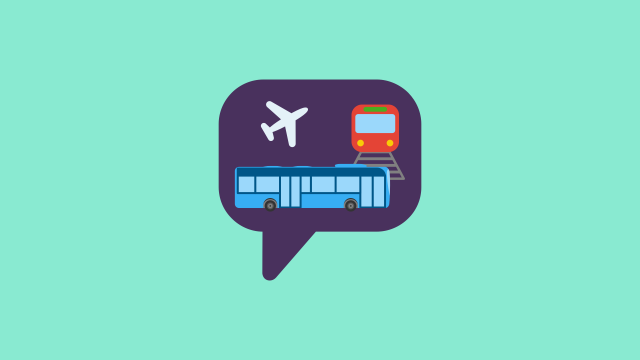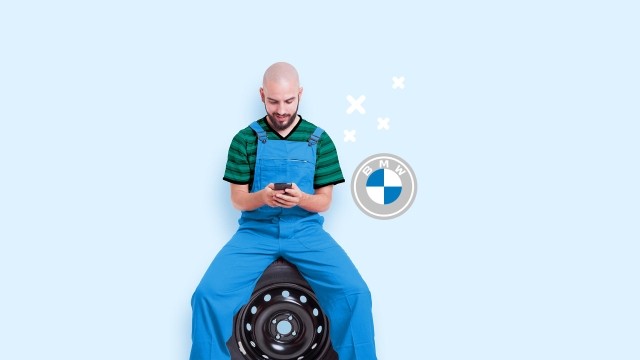In this article:
- Why public transportation companies should rely on messenger apps
- Best practice: How transportation companies use messenger apps successfully
- How public transportation companies can use messenger apps in a legally compliant manner
- Easy integration, less work, and no lengthy training: Here's how to best integrate messaging apps
From flexibility to climate protection: public transportation improves the quality of life. However, unlike "cool" mobility offers such as ride sharing or e-scooter rentals, mass transit systems often have a dusty reputation. Messaging apps can change that! Find out how transportation companies can benefit from WhatsApp and other messenger apps and offer a more modern service.
Modern transportation means that passengers take the subway to the airport, call a ride sharing service to get to their hotel, and rent a bike to explore the city. Of course, many of these offers are provided by public transportation companies.
Public transit companies offer a variety of helpful and affordable transportation services, from airport shuttles to bike sharing, and modern technology around these services. The problem is: people don't necessarily know that. Unfortunately, many customers still think of public transportation as an outdated service.
So, how can public transportation companies make sure that passengers are aware of their offers and modernize their image? By using messenger apps!
In this guide, we'll show you exactly how this works, how public transportation companies benefit from messengers, and how companies around the world use instant messaging for a more modern communication.
Why public transportation companies should rely on messenger apps
If transportation companies want to get rid of their dusty reputation and draw customers' attention to their modern services, they need to communicate this on the most popular communication channels: messenger apps!
Internet-based messaging apps like WhatsApp, Telegram, and Facebook Messenger are hugely popular in people's private communication. They're convenient, easy to use, and have a lot of fun multimedia option. Customers have come to expect this type of communication with businesses as well.
Meeting your customers on the platforms they love is also beneficial to your business!
Whereas people ignore messages in their e-mail inbox (e-mail overload), and don't see your posts on social media (algorithms at work), you'll get 100% attention on messaging channels, such as WhatsApp, Telegram, and iMessage.
Not only do instant messages appear front and center on people's lock screens, they are also read — typically within 15 minutes of receiving them.

That's why transportation companies can really benefit from adding messenger apps to their customer communication channels.
Faster communication
Regardless if you're trying to get a message really fast to your team or if you want to update passengers on a delayed train: messaging apps are the most effective channel when it comes to quick communication, that won't be overlooked.
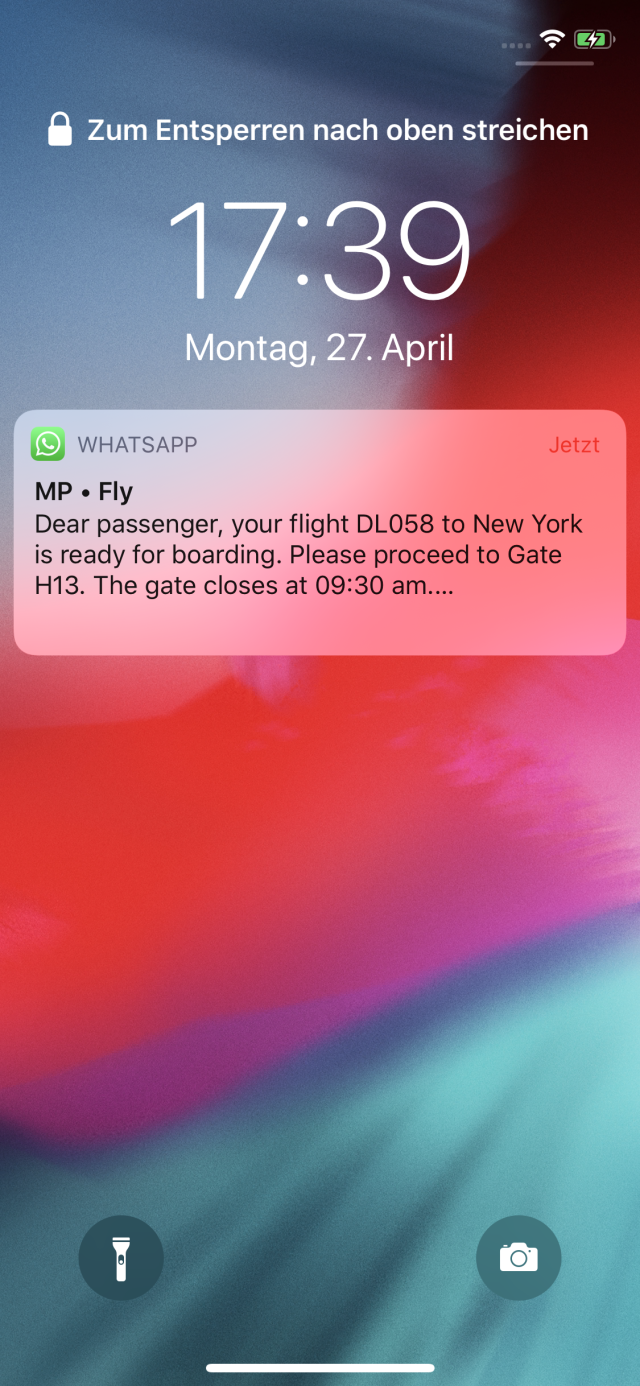
Especially when using public transportation, where people are on the go, using mobile-friendly communication is a huge advantage.
Reduce costs
Offering customer service on messaging apps is much cheaper than a telephone hotline, and much more efficient and less stressful than live chat. It's also much easier for customers to ask questions, report a problem, or get help faster while they're on the go.
Making public transportation more fun
Messenger communication is relaxed, fun, and simply enjoyable. The more laid-back tone as well as multimedia options such as emojis, GIFs, and stickers bring more humor into the chats, and make mass transit organizations more approachable.
Closer to passengers
Because many people nowadays prefer uncomplicated communication via messenger apps, transportation companies can reach their passengers better this way. That's one of the reasons why the Metropolitan Transportation Authority in New York City introduced a WhatsApp service.
It's absolutely imperative that all of our customers are able to communicate with us about their train or bus service in real time.
New York City Transit Chief Customer Officer Sarah Meyer.
Curious? Request a free demo, and our team is happy to guide you through our solution!
Best practice: How transportation companies use messenger apps successfully
What's the best approach for transportation companies to use instant messaging? We've put together several examples for some inspiration.
Mumbai Metro: Selling e-tickets through WhatsApp
In India, Mumbai Metro was the first mass rapid transit system to introduce e-ticketing on WhatsApp. This is a huge service for passengers. Instead of having to wait in long lines to get a ticket, they can use the mobile service to bypass the ticket booths and get their tickets faster.
At the same time, it reduces the workload for ticket agents, and makes it easier for the organization to sell more tickets.
The city that is always on the move now doesn't need to stop for anything. Not even tickets. Say "Hi" for convenience.#whatsappeticketing #eticketingservice #eticket #metroeticket #onlineticket #booknow #bookyourticket #mumbaimetroone #mumbaimetro #haveaniceday pic.twitter.com/rojFb0kqB6
— Mumbai Metro (@MumbaiMetro01) February 7, 2023
Calcutta Tramways: Growing brand loyalty through Instagram Direct
Calcutta Tramways show how messaging apps are also a great tool for growing engagement with customers, improving your brand's image, and strengthening customer loyalty.
On their Instagram profile, Calcutta Tramways encourages followers to send them images from their commute through Instagram Direct Messages. In exchange, the public transit service, features the pictures on their Instagram.
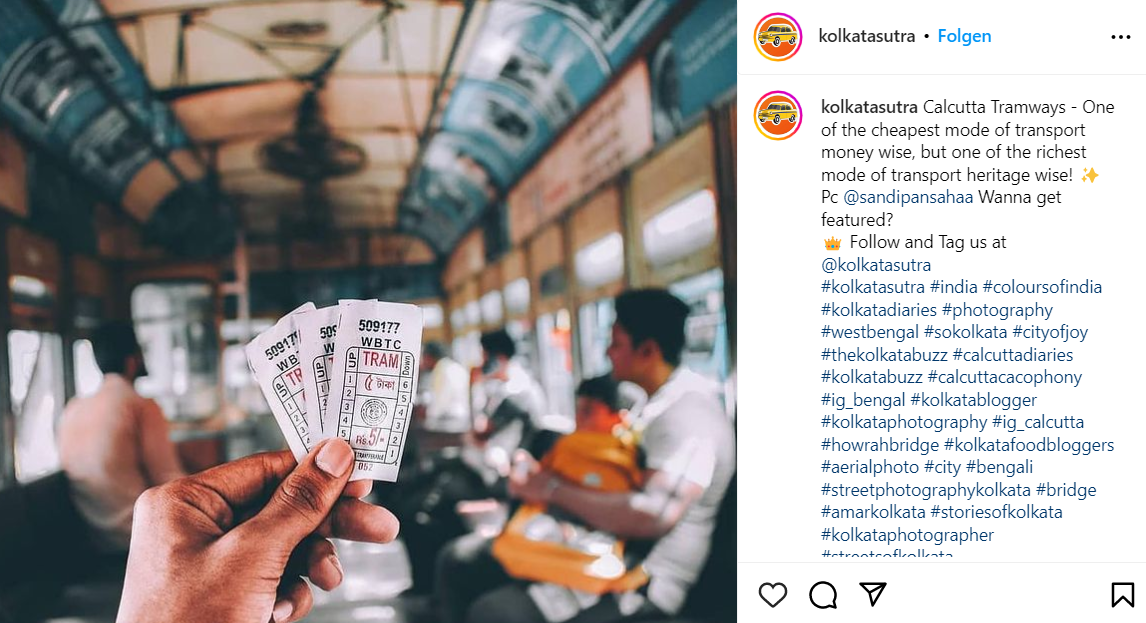
Asking users to take pictures of the tram rides makes the daily commute for passengers more fun. By becoming an active part of the tramways, customers also build a stronger connection with the service and the brand, thus improving loyalty.
This is a great example of how public transportation companies can use messenger apps to modernize their image.
Tfl London: Faster service with a Facebook Messenger chatbot
The Transport for London recognized very early on how public transit companies could benefit from messaging apps. The Tfl launched a Facebook Messenger chatbot already back in 2017 to offer their customers faster help.
The "TravelBot" provides updates on bus arrivals as well as Tube and bus status updates.
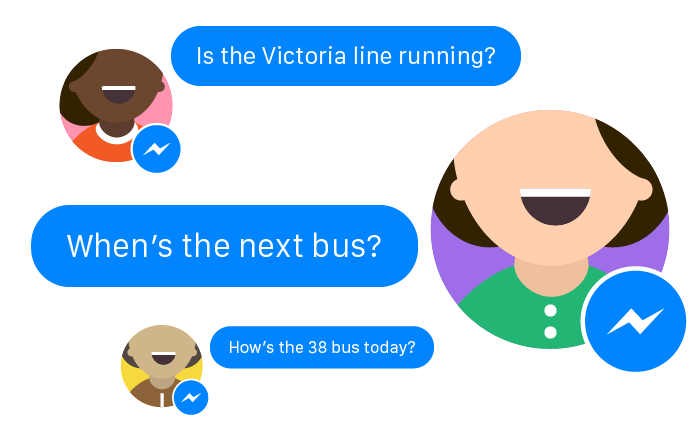
The bot can:
- provide bus arrival times, based on a few keywords ("when's the next bus?") and the location of the user
- send users updates about bus, tube, and rail routes in real time
- if requested, send users a Tube, rail, and Night Tube maps to download
As the Tfl is faced with a huge number of queries every day, the Facebook bot helps the team to provide information to customers faster, and it also reduces the number of FAQs the agents have to answer manually over and over again.
MTA: Reaching more New Yorkers in real time with WhatsApp
Even in the US, where people typically prefer SMS to internet-based messaging apps, public transportation companies have recognized the value of adding messaging apps to talk to their customers. Especially in cosmopolitan cities, a large part of the population might actually prefer WhatsApp and other messenger apps!
That's for instance why the Metropolitan Transportation Authority (MTA) in New York decided to launch a WhatsApp service for subway and bus riders for real-time communication.
WhatsApp will expand the number of customer service channels available to the system's millions of daily customers and is expected to prove especially helpful for non-native English speakers.
MTA
In the first months after launching the service, the Digital Communications Unit received approximately 4,000 WhatsApp messages.
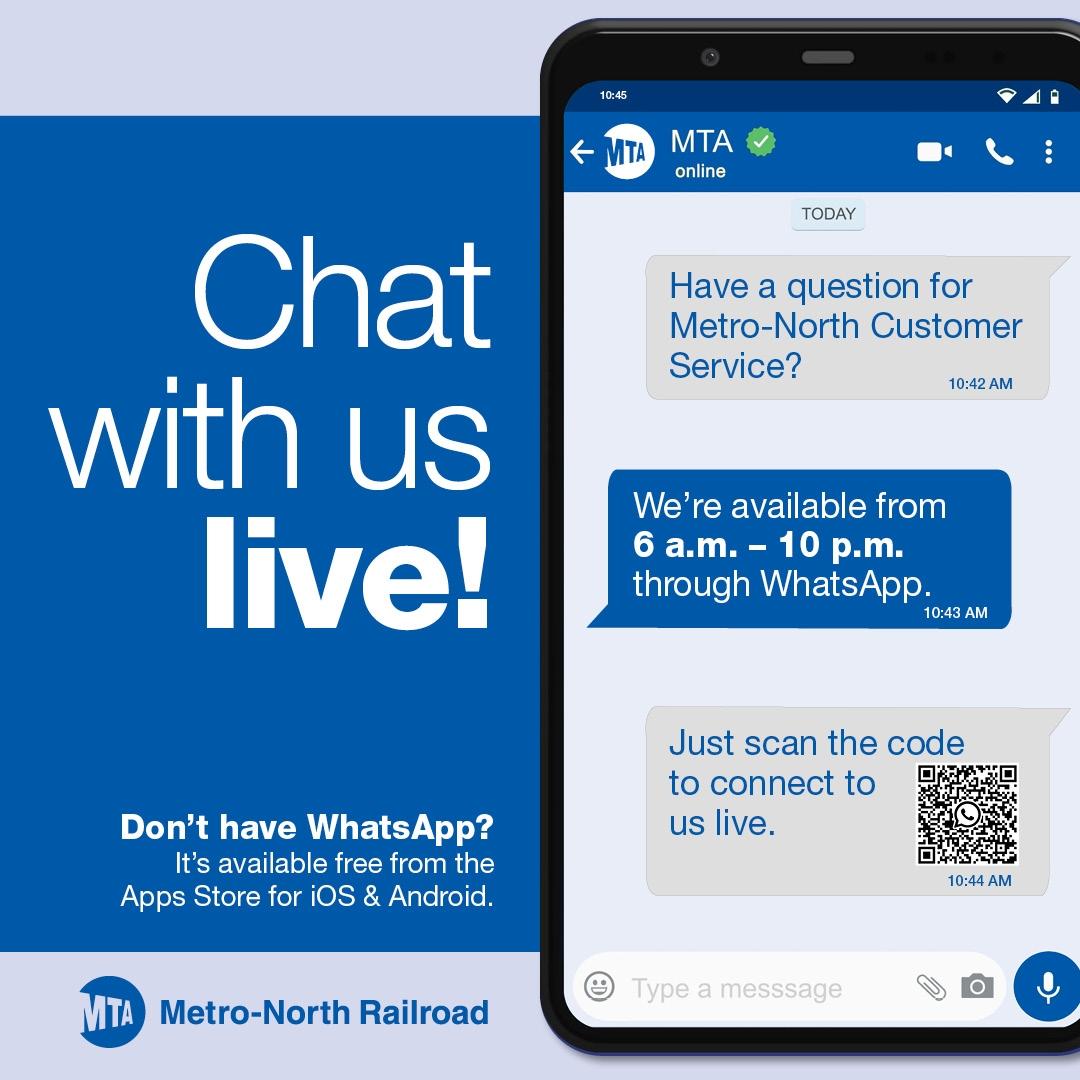
💡Customers can chat with the New York City Transit by visiting http://new.mta.info/whatsapp.
How public transportation companies can use messenger apps in a legally compliant manner
Many employees already use their private instant messaging accounts to talk to customers. They've already realized where customers want to communicate! The problem with that is, however, that they use their private phones. In doing so, they typically violate data privacy laws and WhatsApp's terms and conditions that prohibit the use of the private WhatsApp app in a business context.
To prevent both, companies should turn to professional messenger solutions like Sinch Engage. Why? Because our solution is 100 % compliant with the strictest data privacy regulations. The data is also stored centrally on servers in Europe. We also handle GDPR-compliant data processing, so that no information is leaked to the outside.
Sinch Engage is also a certified Meta business solution provider as well as an official enterprise partner with Apple and other messenger services. That gives you access to the business messaging solutions (and a lot more features, such as integrating chatbots and your CRM system!) of the most relevant messaging apps.
Easy integration, less work, and no lengthy training: Here's how to best integrate messaging apps
A new communication solution naturally offers many new possibilities. At the same time, you're probably wondering: How much effort will this take? After all, WhatsApp and other messaging apps are of little use to your organization if it means more work for your team and months of software training.
This is exactly where the advantages of a messenger solution like Sinch Engage lie. Our software is specifically designed to get you started quickly and easily. It can be set up in just a few weeks, and if your team already uses instant messaging apps privately, using our platform won't be an issue.
A central inbox also ensures that all messages are collected in one place and can be processed. This means less work for your customer service team, and you can also store all data centrally.
And Sinch Engage also offers easy integration with existing CRM systems, so you don't have to manually copy data. With the easy set-up of chatbots, you can also automate many processes, from automatic reply templates to newsletter distribution, so you can work even more efficiently.
Get a first impression of Sinch Engage!
Curious? Request a free demo, and our team is happy to guide you through our solution!
